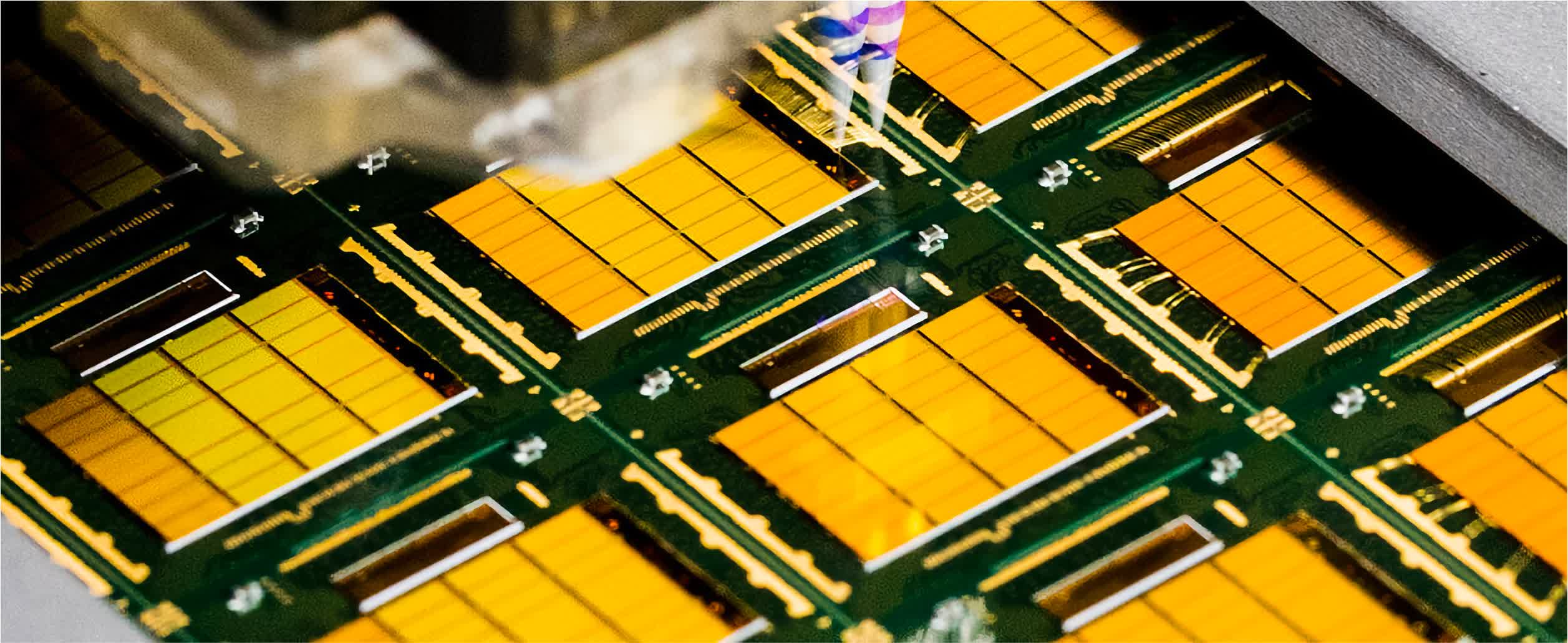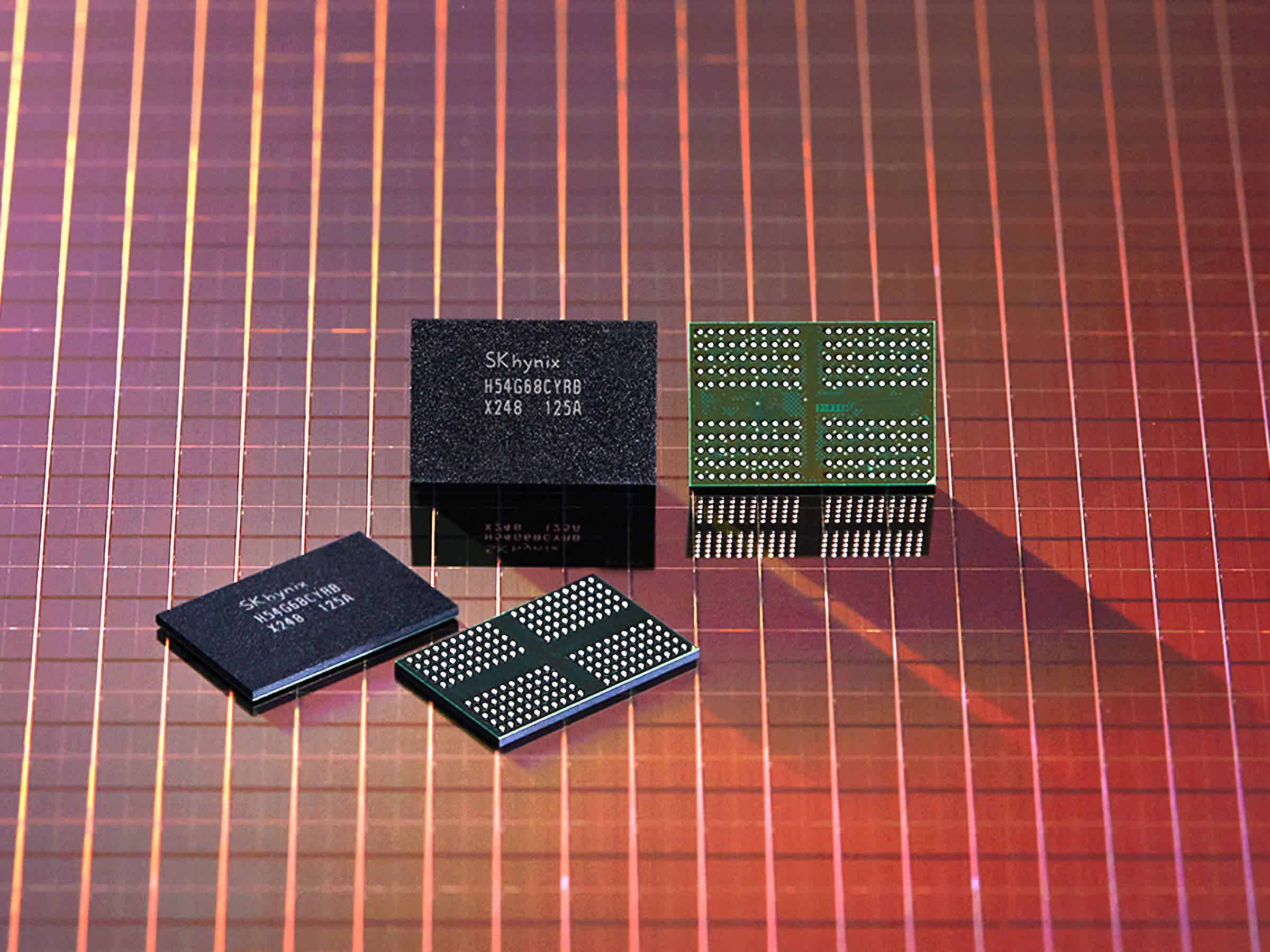In brief: SK Hynix has started using extreme ultraviolet (EUV) lithography for mass production of fourth generation 10nm LPDDR4 DRAM, after successfully testing it in limited production runs for 1ynm DRAM. This means new phones and ultrabooks will integrate faster and more energy-efficient memory that's also cheaper thanks to improved wafer densities achieved with the new 1anm process node.
SK Hynix was the first company to launch DDR5 DRAM modules for enterprise use last year, these provide reduced power consumption and increased reliability thanks to the use of in-chip ECC functionality. Consumer-grade modules should arrive in 2022 alongside a new generation of Intel and AMD CPUs, and with a bit of luck the current chip shortage situation will have improved enough to keep prices at an acceptable level.
In the meantime, the Korean company is hard at work improving existing DRAM products like DDR4 and LPDDR4. Today, SK Hynix revealed it has started mass production of 8 Gb LPDDR4 DRAM based on 1anm, a new generation of 10nm process technology. The first phones and laptops to incorporate the new chips are expected to be launched later this year.

The 1a technology follows three generations of 10nm DRAM which are simply named 1x, 1y, and 1z. Its main benefit is a 25 percent increase in the number of DRAM chips that can be produced per wafer when compared to the 1z process node, leading to better prices for end customers. At the same time, SK Hynix is optimistic about the potential of 1anm DRAM to help satisfy the high demand for memory products.
It's also worth noting that performance of LPDDR4 chips manufactured using the 1anm process node is at a respectable 4266 Mbps, the fastest achieved to date and the maximum speed as described by the LPDDR4 standard specification. Power consumption is also reduced 20 percent, although we'll have to wait and see how this will translate into better smartphone battery life.
SK Hynix says it will use the new 1a process node to make DDR5 DRAM starting next year, so the first consumer grade modules to hit the market are likely to be even better than current ones designed for the data center.
